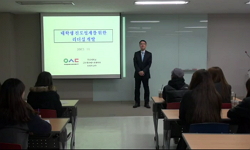Purpose: The purpose of this study was to compare the athlete and non - athlete students` kinesthetic capacities. In this study two sub senses of kinaesthesia including force reproduction ability and Joint reposition sense of elbow compared between at...
http://chineseinput.net/에서 pinyin(병음)방식으로 중국어를 변환할 수 있습니다.
변환된 중국어를 복사하여 사용하시면 됩니다.
- 中文 을 입력하시려면 zhongwen을 입력하시고 space를누르시면됩니다.
- 北京 을 입력하시려면 beijing을 입력하시고 space를 누르시면 됩니다.
A Comparison of Kinaesthetic Sense in Athlete and Non-Athletic University Students = A Comparison of Kinaesthetic Sense in Athlete and Non-Athletic University Students
한글로보기https://www.riss.kr/link?id=A101966725
- 저자
- 발행기관
- 학술지명
- 권호사항
-
발행연도
2015
-
작성언어
Korean
- 주제어
-
자료형태
학술저널
-
수록면
93-93(1쪽)
- 제공처
-
중단사유
※ KISS의 서비스 중단으로 원문이 제공되지 않습니다.
-
0
상세조회 -
0
다운로드
부가정보
다국어 초록 (Multilingual Abstract)
Purpose: The purpose of this study was to compare the athlete and non - athlete students` kinesthetic capacities. In this study two sub senses of kinaesthesia including force reproduction ability and Joint reposition sense of elbow compared between athlete and non-athletic university students Methods:145 male and female athletic students that participated at Iranian Sport Universiade, 2014 (from volleyball, basketball, taekwondo, wrestling and archery) and 137 male and female non - athlete students between 20 and 23 years old were selected as samples of this study. Most common protocol used in active joint repositioning methods includes repositioning of elbow into a reference position. Measurements start with positioning the measured elbow in a specific position. The subject was asked to try to remember the position of the joint. Then the elbow was passively returned into the starting position. After familiarizing the subject with the reference position, he was asked to move the limb into the most appropriate place to match the reference position. The difference between the two represents the measure of active joint position sense. In the accuracy of hand force reproduction test the subject was asked to produce a special force submaximal hand grip (i.e. 40% of their maximal force) and then reproduce 40% of maximal force without using visual or verbal feedback. The difference between the two represents the measure of the accuracy of hand force reproduction. A t-test for independent samples was utilized to analyze the mean error scores of the two groups. Result and conclusion: The results indicated a significant difference between athlete and non-athlete students in both sub senses of kinaesthesia (P≤0.05). Statistical analysis indicated that that NCAA Division I student-athletes possess superior visual skills when compared to non-athletes students.We found higher accuracy scores for two sub senses of kinaesthesia for athlete students compared with non-athletic university students.
동일학술지(권/호) 다른 논문
-
Indonesia Special Physical Education Present and Condition
- 한국체육학회
- ( S. H Nasichin )
- 2015
-
The Practice of Sport and Physical Activity in College Students Venezolanos
- 한국체육학회
- ( Andres De Jesus Diaz Llus )
- 2015
-
- 한국체육학회
- ( Joo Yeon Jin )
- 2015
-
- 한국체육학회
- ( Jin Woo Park )
- 2015




 KISS
KISS





